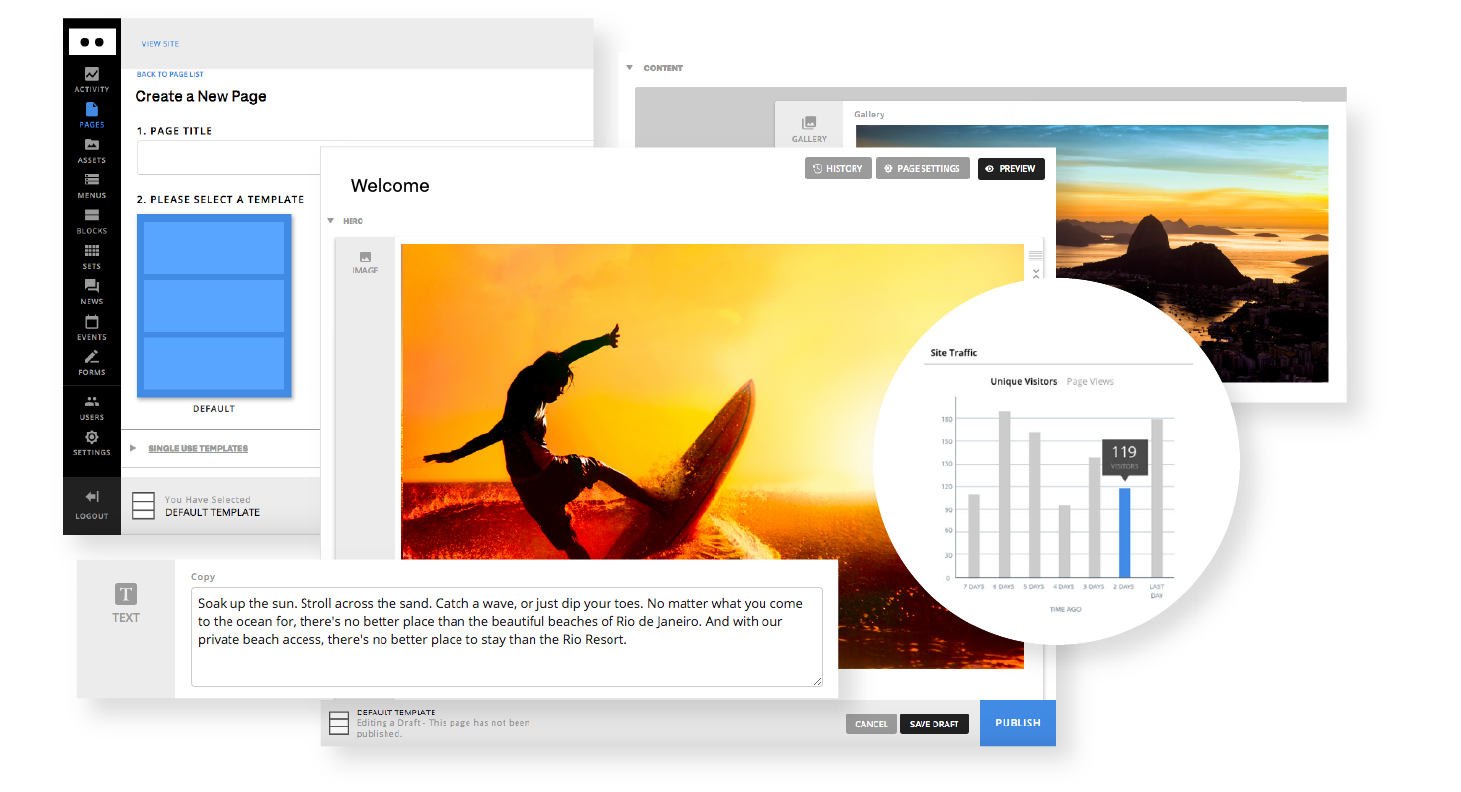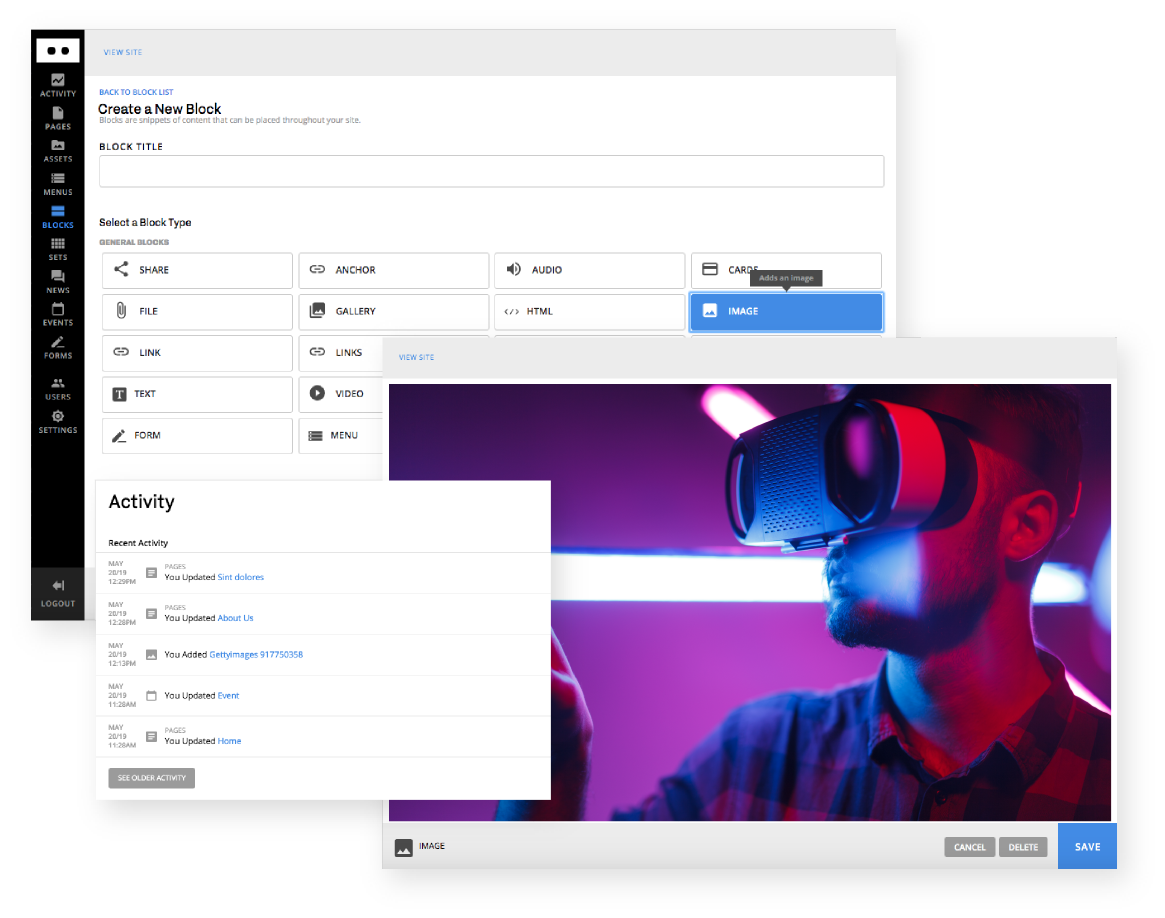Why’d W|W Build a CMS?

If I had a cup of coffee for every time we’ve been asked this question, I’d be more caffeinated than the Energizer bunny. But, it is a great question that beckons an answer.
Since W|W’s founding in 1992, we’ve been hired to help elevate our client’s brands, often in crowded competitive markets. They wanted W|W to create an affinity relationship for their brand with target audiences. In those early years, our solutions typically leveraged clever, design-driven creative approaches and we were limited to the more traditional mediums such as print, environment, installation, advertising, etc. Regardless of the canvas, we embraced a brand-driven approach to deliver uniquely designed experiences that generated enormous wealth and success for our clients.
Most of the early websites, including those produced by W|W, were modest in size and developed using HTML for static page builds. As new web technologies surfaced like Java, Flash and others, the W|W team adapted them into our set of development tools. Literally overnight, the internet added an entirely new canvas for W|W to integrate brand-driven experiences for our clients. And, by using the early web code languages, there were limited constraints on the design solutions we intended to pursue. This was good for us and our clients. The term “webmaster” was born to identify the client resource that was updating the content in these largely static websites.
The next generation of clients referred to as the "early majority" by Geoffrey Moore in Crossing the Chasm had more ambitious needs and goals for their websites, including the ability to control and manage content. This next phase of websites included many that were much larger, particularly with regard to the depth and breadth of content, and they provided continued job security for the webmaster role. At about the same time, the first Content Management Systems (CMS) began to enter the market, which provided client administrators the ability to manage much of the content on their websites without having to know how to code. In other words, individuals that were competent with Microsoft Word and web browsing were now empowered to update a website. As W|W evaluated these new and growing CMSs, we realized that they contained rigid architecture and design constraints which limited our ability to create uniquely compelling websites for our clients. These new technology platforms were forcing us to solve an interactive puzzle in a narrowly defined sandbox.
As W|W evaluated these new and growing CMSs, we realized that they contained rigid architecture and design constraints which limited our ability to create uniquely compelling websites for our clients.
So in 2005-06 we rolled-up our sleeves and built our own CMS using CakePHP: a free, open-source, rapid development PHP framework. Our CakePHP CMS had several release upgrades and was used to power the majority of W|W’s web projects until 2013 when W|W launched the next generation of our CMS built using Ruby on Rails (more on the Rails CMS below).
The simple and intuitive interface of BlokBlok CMS resonated with clients, even vs. the early versions of WordPress, Drupal and Joomla (the most popular free, open-source CMS platforms). As our clients’ needs grew, we added modules to the CMS, including News, Calendar, Directory, Forms and others to meet common content needs.
Over time, the underlying code base supporting the core CMS and modules grew to a point where it was becoming difficult to extend. At this point in the technology evolution, responsive design had appeared, social media was everywhere and 3rd party integrations via friendly APIs had become much more efficient. We convened the W|W team and began plotting our next steps. The top options on the table for us to consider included:
-
Redo and update the CakePHP CMS, continuing to leverage the features our clients really liked
-
Develop a new CMS from scratch and evaluate different code bases from which to build (CakePHP, Rails, etc.)
-
Find an existing open-source CMS that we could embrace while extending the code base to deliver the feature/function desired by our clients
-
Shift gears and use the primary open-source CMSs (WordPress, Drupal, Joomla, etc.)
After a healthy debate, we decided to build a new CMS using Ruby on Rails in 2012-13. Rails is a web application development framework written in the Ruby language that is designed to make programming web applications easier. It allows developers to write less code while accomplishing more than many other languages and frameworks. W|W leveraged key learnings from the CakePHP CMS, along with web technology innovation, to build the Rails CMS that is equally optimized for content managers, designers and developers. We conducted an extensive UI/UX exercise in which we audited other CMS admin environments to identify, and then enhance, best practices resulting in a powerful CMS that is visually elegant, simple and intuitive. BlokBlok CMS provides the user with a pleasant experience, absent the frustrating interactions found in competitive platforms.
While the effort required for the team to build this software was significant, we’re confident that this web application positions W|W to design and develop brand-driven (smart, unique, relevant, accessible, interactive) websites for our clients.
In recent years, we’ve seen new competitors surface in the web CMS landscape that allow organizations to quickly build a website, including Wix, Weebly and Squarespace. These products provide a viable option for thousands of businesses. Other options like Drupal, Joomla and Wordpress have continued to evolve, but still lack a simple, intuitive experience for content managers. BlokBlok CMS, however, in its extensibility and customizability, allows us to create websites which embrace the notion of what it means to unique, unassailable and brand-driven while providing a great experience for content managers.
For more information about BlokBlok CMS, please visit www.blokblokcms.com
